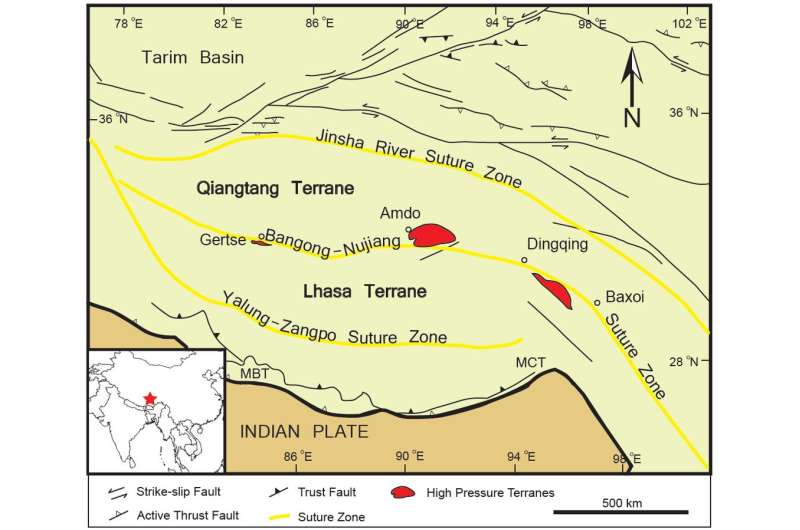Study reveals petrogenesis of porphyry copper deposits in southern Tibet

The Gangdese porphyry copper deposit belt (GPCDB) is along the southern margin of Lhasa Terrane. The deposits of GPCDB were formed in the Miocene after the India-Eurasia collision. The genesis of these porphyry copper deposits is controversial.
Jiama is a giant porphyry-skarn Cu-polymetallic deposit in the GPCDB. Granite porphyry is the main magmatic rocks in the deposit. Clarifying the origin of granite porphyry is crucial for understanding mineralization.
Combining the geochronology, geochemical and isotopic studies of the granite porphyry in the Jiama deposit, a research team led by Prof. Sun Weidong from the Institute of Oceanology of the Chinese Academy of Sciences provided firm constraint on the petrogenesis of granite porphyry and mineralization potential.
The study was published in Journal of Geochemical Exploration on April 11.
Zircon U-Pb dating indicated that the granite porphyry and other felsic porphyries in the Jiama deposit mainly formed during the 15–16 Ma magmatic pulse events. The formation age of felsic porphyries is consistent with the metallogenic age.
By compiling the previously published and newly obtained Sr-Nd isotope data, the researchers found that all the felsic magmatic rocks in the Jiama deposit had a similar and narrow variation range of ISr, indicating that they had an identical magma source.
The zircon Hf-O isotopic compositions suggested their homologous properties as well. All the isotopic data suggested that these felsic porphyries were derived from an identical relatively depleted magma source.
The Sr-Nd isotope two end-member mixing modeling indicated that these porphyries might have originated from melts of juvenile lower crust mixing with a small amount of ultrapotassic magma.
The (La/Sm)N-SiO2, (Dy/Yb)N-SiO2 evolution trends indicated that different from other felsic porphyries in the Jiama deposit, the magma of granite porphyry experienced the fractional crystallization of hornblende and plagioclase. The fractional crystallization of plagioclase during magma evolution gradually lowered the Sr contents and erased the adakitic characteristics.
"The high zircon Ce4+/Ce3+ values demonstrate that the granite porphyries in the Jiama deposit have high oxygen fugacity, which is favorable for Cu–Mo mineralization," said Wang Kun, first author of the study.
More information: Kun Wang et al, Petrogenesis and metallogenic implications of the Miocene granite porphyry in the Jiama Cu-polymetallic deposit, Gangdese belt, South Tibet, Journal of Geochemical Exploration (2022). DOI: 10.1016/j.gexplo.2022.106998
Provided by Chinese Academy of Sciences




















